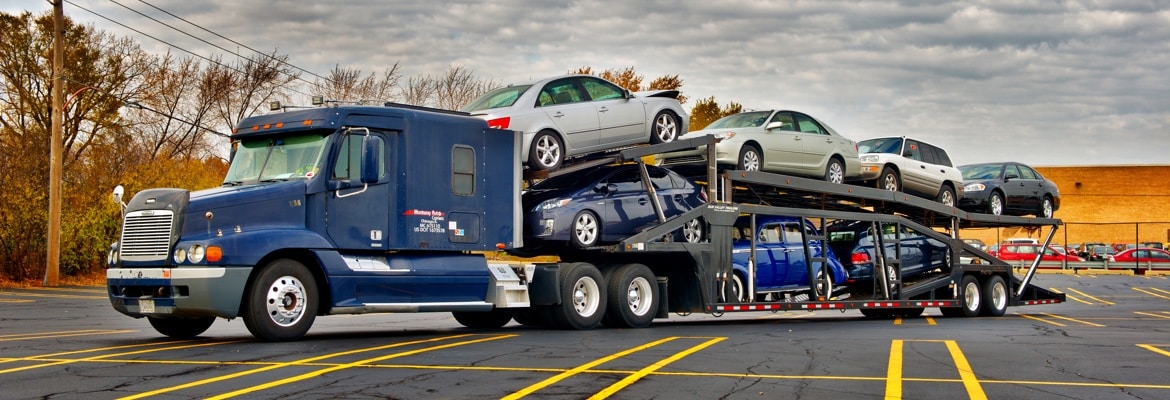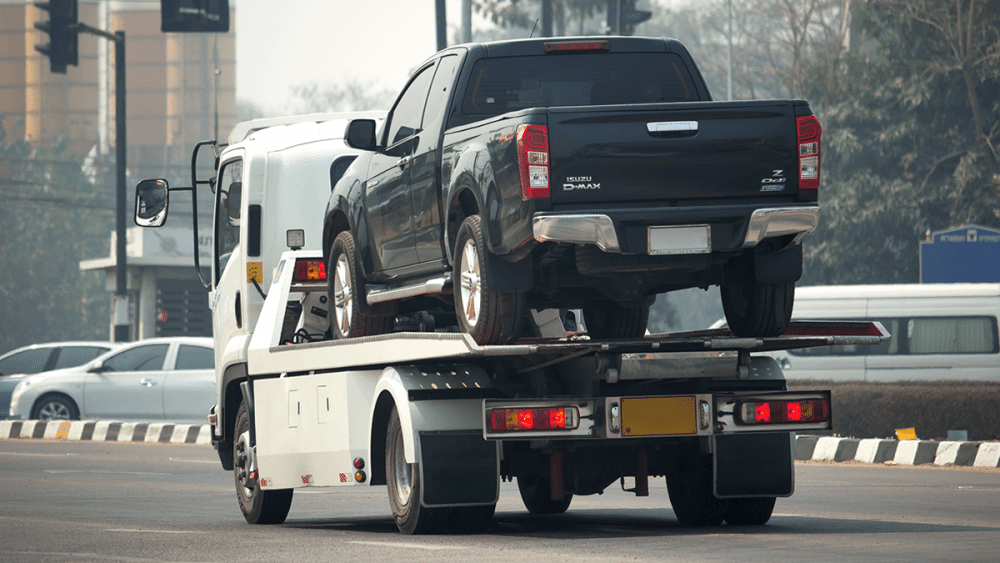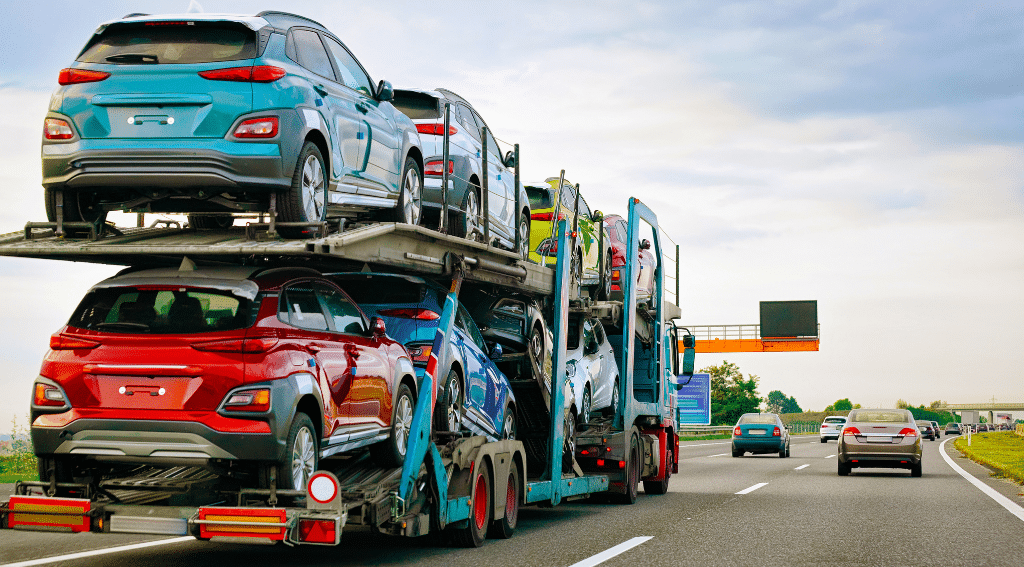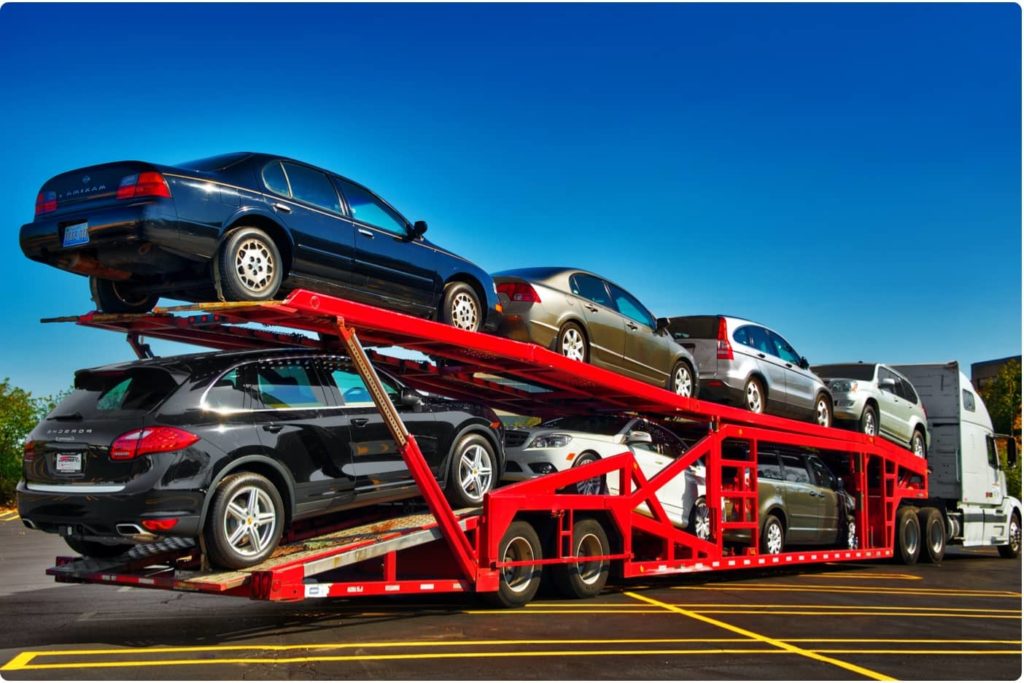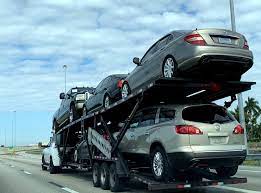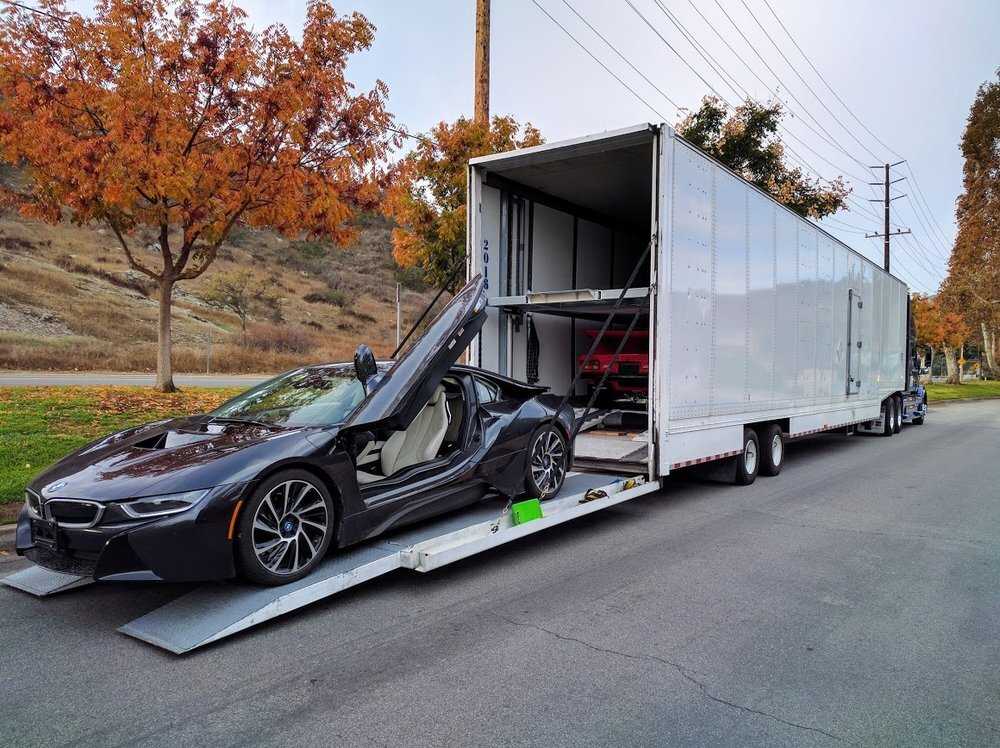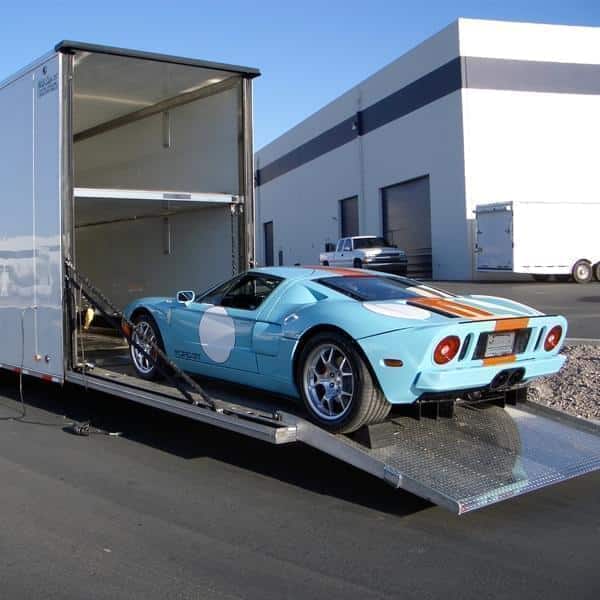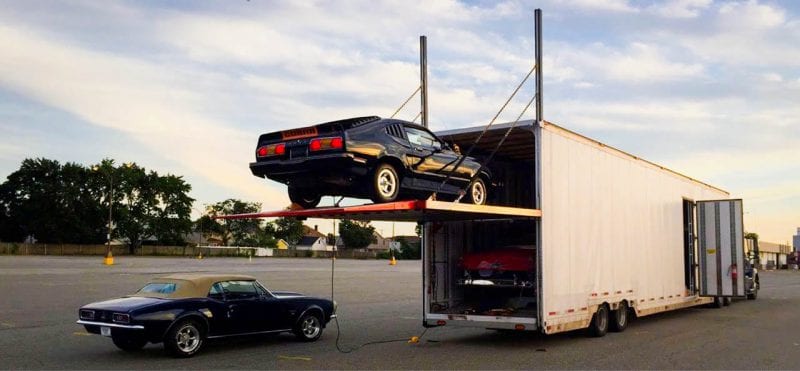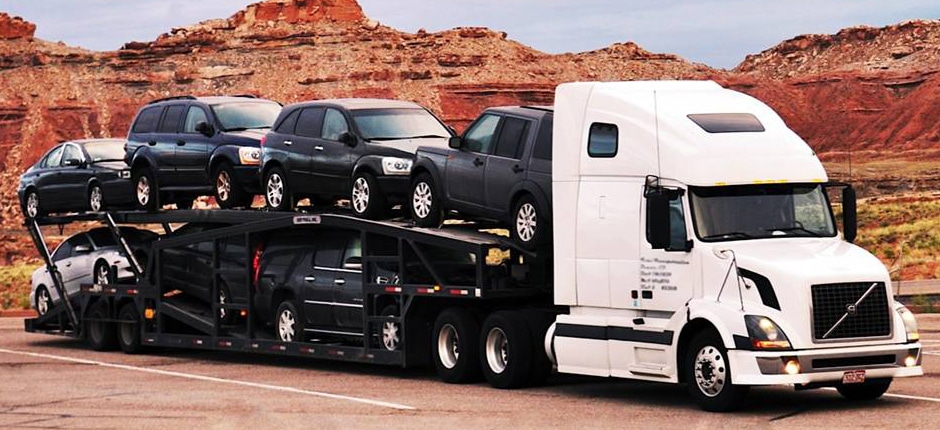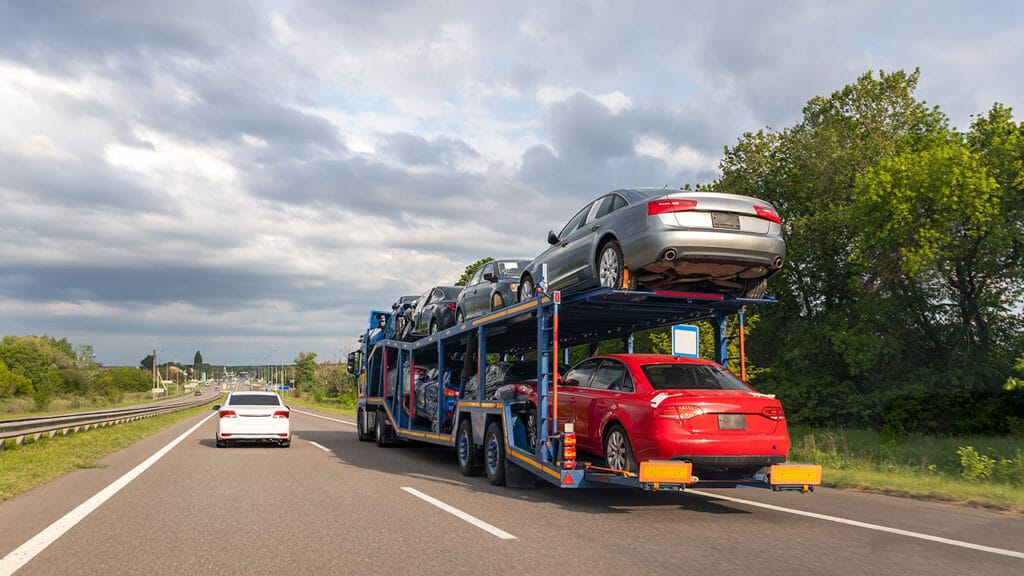Can You Put Stuff in the Car When Shipping
When it comes to shipping items, particularly during a relocation or a long-distance move, the question often arises: Can you put stuff in the car when shipping? The answer to this question depends on the shipping method and the policies of the shipping company. While it might be tempting to maximize space and transport more belongings by loading up your car, it’s essential to understand the guidelines and limitations to avoid potential issues. In this introduction, we will explore the factors to consider when deciding whether you can load your car with items when shipping and provide insights into the best practices for a smooth and hassle-free shipping experience.
Is It Legal To Ship Your Car With Personal Items Inside It?
Shipping a car with personal items inside it can be a tempting idea, especially during a long-distance move. However, the legality of transporting belongings within your vehicle varies depending on the shipping method and the regulations of the car shipping industry. While it might be allowed in some instances, it’s essential to be aware of the rules and potential consequences before loading up your car.
In general, most auto transport companies discourage or explicitly prohibit shipping personal items inside the vehicle. This policy is primarily for safety reasons, as loose items can pose a risk during transit. They may shift, causing damage to the car’s interior or interfering with the driver’s ability to operate the vehicle properly.
Moreover, auto transport companies are regulated by the Department of Transportation (DOT) and the Federal Motor Carrier Safety Administration (FMCSA). Violating their policies by loading personal items in the car could lead to fines, delays, or even the refusal to transport the vehicle.
To ensure a smooth and legal car shipping process, it’s best to remove all personal belongings from the vehicle before handing it over to the auto transport company. If you need to ship personal items, consider alternative shipping methods or explore shipping options explicitly designed for household goods and personal belongings. By following the guidelines and adhering to the regulations, you can ensure a stress-free and compliant car shipping experience.
Can You Put Stuff in Your Vehicle When Shipping It?
Shipping a vehicle can be a convenient solution, especially during a long-distance move or when relocating to a new place. However, the question often arises: Can you put stuff in your vehicle when shipping it? The answer to this question depends on the specific policies of the auto transport company you choose.
In general, most auto transport companies discourage or prohibit shipping personal belongings inside the vehicle. This is primarily due to safety and liability concerns. Loose items inside the vehicle can shift during transit, potentially causing damage to the car’s interior or interfering with the driver’s ability to operate the vehicle safely.
Moreover, auto transport companies are regulated by the Department of Transportation (DOT) and the Federal Motor Carrier Safety Administration (FMCSA). These regulations often prohibit the transport of household goods inside vehicles being shipped by auto-car carriers.
To ensure a smooth and hassle-free car shipping experience, it’s best to remove all personal belongings from the vehicle before handing them over to the auto transport company. If you need to ship personal items, consider alternative shipping methods that specialize in household goods and personal belongings. By following the guidelines and adhering to the regulations, you can ensure a safe and compliant vehicle shipping process.
Can You Pay Extra To Send My Things With Your Car?
When it comes to shipping personal belongings along with your car, the option to pay extra for this service depends on the shipping company’s policies and the shipping method chosen. Some auto transport companies may offer additional services that allow you to send a limited amount of personal items inside the vehicle for an extra fee.
However, it’s essential to consider the regulations and guidelines set by the Department of Transportation (DOT) and the Federal Motor Carrier Safety Administration (FMCSA). These regulations may restrict or prohibit the transportation of household goods inside vehicles being shipped by auto carriers for safety and liability reasons.
Before opting to pay extra for sending your belongings with your car, it’s crucial to inquire with the auto transport company about their specific policies regarding personal items. If the shipping company does not permit shipping personal belongings inside the vehicle, it’s best to explore alternative shipping methods explicitly designed for household goods and personal belongings.
Always ensure you have a clear understanding of the company’s policies and any potential risks or limitations before making a decision. By doing so, you can avoid any issues and ensure a smooth and compliant shipping process for both your car and personal belongings.
What Should You Put in Your Car When Shipping It?
When shipping your car, it’s essential to know what you can and cannot put inside the vehicle during transit. While most auto transport companies discourage or prohibit shipping personal belongings inside the car for safety and liability reasons, there are a few items you can place inside your vehicle.
- Vehicle Documents: Keep all necessary vehicle documents, such as the registration, auto transport insurance, and any relevant permits, inside the car for easy access during the shipping process.
- Spare Tire and Jack: It’s acceptable to leave the spare tire and jack in the car, as they are part of the vehicle’s standard equipment.
- Emergency Kit: Include a basic emergency kit with items like a first aid kit, flashlight, and reflective warning triangles, in case of any roadside emergencies.
- Child Car Seats: If you’re transporting your car with child car seats installed, you can leave them in place for convenience.
- Pet Supplies: If you’re shipping your car and traveling with pets, you can keep pet supplies like leashes, pet carriers, and food bowls inside the vehicle.
Remember to avoid placing any personal belongings or valuable items inside the car during shipping, as most auto transport companies do not allow this practice. Loose items can shift during transit, potentially causing damage to the car’s interior or compromising safety.
Always check with the auto transport company about their specific policies regarding items inside the vehicle. By following the guidelines and only placing appropriate and necessary items in your car, you can ensure a smooth and compliant car shipping process.
Pros and Cons of Shipping a Car and Belongings Across the Country
Shipping a car and belongings across the country can be a practical solution for long-distance moves or relocations. However, like any major decision, it comes with its own set of pros and cons. Understanding these advantages and disadvantages can help you make an informed choice that suits your specific needs.
Pros:
- Convenience: Shipping your car and belongings saves you from the stress and fatigue of driving long distances. It allows you to focus on other aspects of the move.
- Time-Saving: Shipping is generally faster than driving, especially for cross-country moves, allowing you to reach your destination sooner.
- Safety and Reduced Wear: Shipping your car prevents wear and tear associated with long drives, preserving its condition.
- Transporting Bulky Items: Shipping allows you to transport larger items and household goods that may not fit in a standard car.
- Professional Handling: Reputable shipping companies have experienced professionals who ensure the safe and secure transportation of your vehicle and belongings.
Cons:
- Cost: Shipping a car and belongings can be more expensive than driving, especially for long distances.
- Limited Personal Access: During shipping, you won’t have immediate access to your car and belongings, which could be inconvenient if you need them urgently.
- Insurance Limitations: While reputable shipping companies offer insurance, it may not fully cover the value of sentimental or high-value items.
- Scheduling Delays: Unexpected delays, such as weather conditions or logistical issues, can affect the delivery timeline.
- Lack of Control: You have less control over the transportation process compared to driving yourself, which may cause some anxiety.
Considering these pros and cons will help you weigh the benefits and drawbacks of shipping your car and belongings across the country. If you decide to proceed with shipping, choose a reliable and experienced shipping company to ensure a smooth and stress-free move.
Tips for Shipping Your Belongings in Your Car
Shipping your belongings in your car can be a convenient and cost-effective solution, especially during a move or a road trip. To ensure a smooth and hassle-free experience, here are some essential tips to consider:
- Organize and Prioritize: Before loading your car, declutter and organize your belongings. Prioritize essential items to ensure everything fits comfortably and securely.
- Use Suitable Containers: Utilize sturdy boxes, bins, and travel bags to pack your belongings. Make sure they fit well in your car’s trunk and backseat to prevent shifting during transit.
- Secure Fragile Items: Wrap delicate items in bubble wrap or soft materials to protect them from damage during the journey.
- Maximize Space: Pack strategically to optimize space. Place smaller items inside larger ones and fill empty spaces to minimize shifting.
- Load Heaviest Items First: Start by loading heavier items first to ensure proper weight distribution and balance within the car.
- Avoid Blocking Visibility: Ensure your view is not obstructed while driving by arranging items in a way that maintains clear lines of sight.
- Secure Items Safely: Use bungee cords, tie-downs, or cargo nets to secure your belongings, preventing them from moving during transit.
- Pack Essentials Last: Keep important items like documents, snacks, and valuables easily accessible by packing them last.
- Check Weight Limits: Be mindful of your car’s weight limit, including passengers and luggage. Exceeding the limit can affect your car’s performance and safety.
- Regularly Check and Reorganize: Periodically check and reorganize your belongings during stops to ensure they remain secure throughout the journey.
By following these tips, you can efficiently ship your belongings in your car and enjoy a stress-free and enjoyable trip with your items safely transported to your destination.
The Good and the Bad of Side Shipping Your Belongings in Your Car
Side-shipping your belongings in your car can be a tempting option, especially during a move or a road trip. While there are some advantages to this approach, there are also potential downsides to consider. Understanding the good and the bad aspects can help you make an informed decision.
The Good:
- Cost-Effective: Side shipping can be more cost-effective than traditional shipping methods, especially for smaller quantities of belongings.
- Convenience: You have direct access to your belongings throughout the journey, making it easy to retrieve items as needed.
- Flexible Packing: Side shipping allows you to pack your belongings as you see fit, making it convenient for irregularly shaped or fragile items.
- No Shipping Wait Time: You won’t have to wait for shipping companies to transport your belongings; you can start your journey immediately.
The Bad:
- Limited Space: Side shipping limits the amount of space available for passengers, potentially leading to discomfort during long drives.
- Safety Concerns: Unsecured items may shift during transit, posing safety hazards, and reducing visibility while driving.
- Potential Damage: Items packed loosely or without proper protection may be prone to damage or breakage during the journey.
- Weight and Performance: Overloading your car with belongings can affect its performance, including decreased fuel efficiency and handling.
- Legal and Safety Regulations: Some states and countries have regulations regarding side shipping, and not complying with them can lead to fines or penalties.
Before side-shipping your belongings in your car, carefully consider the pros and cons. If you choose to do so, pack your items securely, avoid overloading, and follow all safety and legal guidelines to ensure a safe and enjoyable journey with your belongings.
How Much Does Car Shipping Cost With Stuff?
The cost of car shipping with stuff, also known as personal items inside the vehicle (PIV), can vary based on several factors. While it may seem like an efficient way to transport both your car and belongings, it’s crucial to understand the pricing considerations involved.
Car shipping companies usually offer two types of shipping: open transport and enclosed transport. The cost of shipping stuff may differ between these methods. Additionally, the distance of the move, the weight of your belongings, the size of the vehicle, and the shipping company’s policies can influence the overall cost.
Typically, shipping personal items inside the car can incur additional charges, as the company needs to account for the added weight and potential liability. Some auto transport companies may have a set fee for PIV, while others may charge based on the total weight of the car and belongings.
On average, the cost of car shipping with stuff can range from $75 to $200 extra, depending on the company and the extent of the personal items being transported.
Before deciding to ship your car with belongings inside, it’s essential to discuss the specifics with the auto transport company and get a detailed quote. Be transparent about the items you plan to transport to avoid any surprises during the shipping process. By understanding the cost implications and choosing a reputable shipping company, you can ensure a smooth and cost-effective car shipping experience with your belongings safely transported to your destination.
Best Practices for Shipping Stuff in Your Car
Shipping stuff in your car can be a convenient and cost-effective solution, whether you’re moving or embarking on a road trip. To ensure a smooth and hassle-free experience, it’s essential to follow some best practices for packing and securing your belongings.
- Pack Strategically: Organize your belongings efficiently, placing heavier items on the bottom and lighter items on top. Utilize sturdy boxes, bags, and bins to keep everything organized.
- Secure Items Properly: Use bungee cords, tie-downs, or cargo nets to secure your belongings and prevent them from shifting during transit.
- Maximize Space: Pack your car smartly to optimize space. Fill empty spaces with soft items or cushions to prevent shifting.
- Avoid Blocking Visibility: Ensure your view is not obstructed while driving by arranging items in a way that maintains clear lines of sight.
- Protect Fragile Items: Wrap delicate items in bubble wrap or soft materials to protect them from damage during the journey.
- Keep Valuables with You: Avoid packing valuable items in the car and keep them with you instead, especially if you plan to leave the car unattended during the trip.
- Maintain Essential Accessibility: Keep important personal or household items, such as documents, snacks, and clothing, easily accessible by packing them last or in a separate bag.
- Observe Weight Limits: Be mindful of your car’s weight limit, considering both passengers and luggage, to ensure optimal performance and safety.
- Check Local Regulations: Research any state or country regulations regarding transporting belongings in your car to avoid potential legal issues.
- Regularly Inspect and Reorganize: Periodically check and reorganize your belongings during stops to ensure they remain secure throughout the journey.
By following these best practices, you can confidently ship your stuff in your car, ensuring a safe and pleasant journey with your belongings securely transported to your destination. Proper planning and organization will make the entire process more efficient and stress-free.
Is It Safe To Put Stuff in Your Car When Shipping It?
Putting stuff in your car when shipping can be a tempting idea, as it allows you to transport personal belongings along with the vehicle. However, it’s essential to consider the safety implications before making this decision.
In general, shipping companies discourage or prohibit shipping personal belongings inside the car for safety reasons. Loose items can shift during transit, potentially causing damage to the car’s interior or creating safety hazards for the driver.
Additionally, some shipping companies are regulated by the Department of Transportation (DOT) and the Federal Motor Carrier Safety Administration (FMCSA), which may have strict policies regarding transporting items inside the vehicle. Violating these regulations can result in fines or other penalties.
If you choose to put stuff in your car when shipping it, ensure that the items are properly secured to prevent movement during transit. Use appropriate packing materials, tie-downs, or cargo nets to keep your belongings in place.
However, the safest practice is to remove all personal belongings from the car before shipping it. If you need to transport personal items, consider using alternative shipping methods that are explicitly designed for household goods and belongings.
By prioritizing safety and adhering to shipping company policies, you can ensure a smooth and secure car shipping experience without compromising the safety of your belongings or the vehicle.
Pick a Shipping Method To Put Stuff in Car When Shipping
When it comes to shipping your car and personal belongings, choosing the right shipping method is crucial for a smooth and secure experience. While some auto transport companies discourage or prohibit putting stuff in the car when shipping it, there are alternative shipping methods explicitly designed for this purpose. Here are some options to consider:
- Auto Transport with PIV (Personal Items Inside Vehicle): Some auto transport companies offer specific services that allow you to ship personal belongings inside the car. They may charge extra for this option, considering the added weight and potential liability.
- Door-to-Door Moving Services: Opt for door-to-door moving services that specialize in transporting both your car and personal belongings. These services often offer a convenient and comprehensive solution for your relocation needs.
- Freight Shipping: Consider freight shipping services for bulkier or numerous items. Freight carriers are equipped to handle large shipments, including personal belongings, and may be more flexible regarding what can be transported.
- DIY Moving Trucks: If you have a significant number of belongings to transport, consider renting a DIY moving truck. This allows you to have full control over packing your car and belongings together.
- Personal Driving: For a more cost-effective approach, consider driving the car yourself and transporting your belongings in the car. This option may be suitable for shorter distances and when you prefer direct control over your items.
When choosing a shipping method to put stuff in your car when shipping, it’s essential to research and compare various options. Consider the cost, convenience, safety, and regulations of each method to make an informed decision that best suits your specific needs and preferences. By selecting the right shipping method, you can ensure a successful and stress-free transport of both your car and personal belongings.
Weight Limit: The Most Important Factor
When considering putting stuff in your car when shipping it, the weight limit is the most crucial factor to keep in mind. Exceeding the car’s weight limit can lead to safety hazards, affect performance, and even void the auto transport company’s insurance coverage.
Each car has a designated maximum weight capacity, which includes the combined weight of passengers, cargo, and personal belongings. Putting too much stuff in the car can strain the suspension, brakes, and tires, potentially leading to mechanical issues and reduced fuel efficiency.
Additionally, exceeding the car’s weight limit can affect the car’s handling and stability, especially during turns or sudden maneuvers. This can compromise the driver’s control over the vehicle, leading to potential accidents.
To ensure a safe and problem-free car shipping experience with belongings inside, carefully check your car’s weight limit and account for the weight of the items you plan to transport. Distribute the weight evenly and avoid overloading any specific area of the car.
If you find that your belongings exceed the car’s weight limit, consider shipping personal items separately or explore alternative shipping methods that can accommodate larger quantities of belongings.
By respecting the weight limit and adhering to safety guidelines, you can confidently put stuff in your car when shipping it, knowing that both your car and belongings will be transported safely and securely to your destination.
Car Damage: Pack Correctly
Proper packing is essential when putting stuff in your car for shipping to prevent car damage. Securely pack your belongings, avoiding loose items that could shift during transit and cause harm. Use sturdy boxes and padding to protect fragile items. Distribute weight evenly to maintain the car’s balance and handling. Additionally, avoid overloading the car, respecting its weight limit. By packing correctly, you can ensure a safe and smooth car shipping experience with your belongings arriving intact at your destination.
Theft: A Potential Risk
When putting stuff in your car for shipping, the risk of theft is a significant concern to be aware of. While some auto transport companies may allow personal items inside the vehicle, leaving valuable belongings unattended during transit can attract unwanted attention. Items visible from the outside may tempt thieves, leading to potential break-ins. To minimize this risk, avoid transporting valuable or sentimental items in the car. Instead, ship such belongings separately or keep them with you during the journey. Prioritizing safety and security will help ensure a worry-free car shipping experience without compromising the well-being of your belongings.
FAQs
Can I Load Stuff in the Bed of My Truck When Shipping?
Loading stuff in the bed of your truck when shipping can be a tempting option, especially for a long-distance move or transport. However, it’s crucial to consider the policies of the shipping company and the potential risks involved. Some auto transport companies may allow items in the truck bed, but they should be securely tied down to prevent shifting during transit. It’s essential to communicate with the shipping company, understand their guidelines, and ensure your belongings are properly packed and protected. Be cautious with valuable items, as they might not be covered by insurance. Prioritizing safety and adherence to regulations will ensure a smooth and secure truck shipping experience.
Does Insurance Cover the Stuff in the Car?
When shipping your car with belongings inside, insurance coverage for the items can vary depending on the shipping company and the specific policy. Most auto transport companies have insurance that covers the vehicle itself, but it may not extend to personal items inside the car. To ensure coverage for your belongings, consider purchasing separate insurance or verifying if the shipping company offers additional coverage for personal items. Be sure to read the insurance policy carefully to understand any limitations or exclusions. Taking these precautions will provide peace of mind, knowing your car and belongings are adequately protected during transit.

